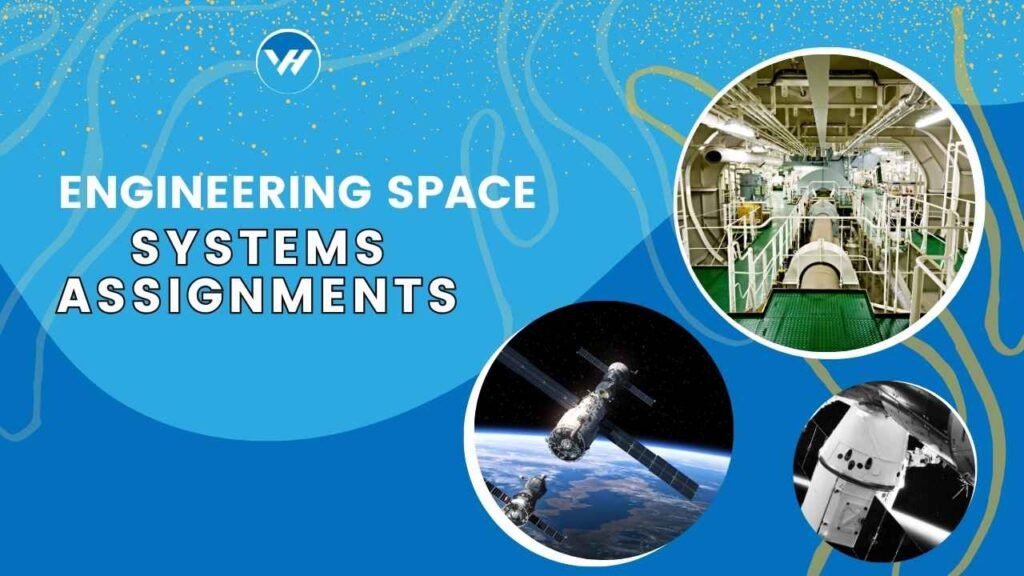Space systems are complex assemblies of hardware and software designed to operate in the space environment. They encompass a variety of components such as satellites, spacecraft, space probes, and ground control stations. These systems are pivotal in conducting space missions, whether for scientific research, communication, or navigation purposes.

Table of Contents
ToggleImportance of Space Systems in Modern Engineering
Engineering space systems is crucial as it drives advancements in technology and space exploration. From enabling global communications to exploring distant planets, space systems play a significant role in expanding our understanding of the universe and improving everyday life on Earth.
Understanding Space Systems Assignments
Overview of Typical Assignments
Space systems assignments often require students to design, analyze, or evaluate various aspects of space missions or spacecraft. These assignments might include tasks like creating satellite models, analyzing propulsion systems, or simulating orbital mechanics.
Key Components of Space Systems Assignments
A well-rounded space systems assignment typically includes a combination of theoretical analysis, practical design, and simulation. Key components might involve:
- Problem Statement: Defining the specific challenge or objective.
- Design Specifications: Outlining requirements and constraints.
- Analytical Methods: Employing mathematical and engineering techniques.
- Simulation and Testing: Using software tools to validate designs.
- Report Writing: Documenting findings and recommendations.
Challenges in Space Systems Assignments
Complexity and Scope
Space systems assignments can be particularly challenging due to the complexity of the systems involved and the broad scope of knowledge required. These challenges include dealing with intricate technical details and understanding the interplay between various components.
Common Pitfalls and Mistakes
Students often face common pitfalls such as underestimating the computational requirements, overlooking crucial design constraints, or failing to validate their models thoroughly. Addressing these issues requires careful planning and a comprehensive approach to problem-solving.
Steps to Approach Space Systems Assignments
Research and Data Collection
The first step is to gather relevant data and research materials. This involves understanding the current state of technology, reviewing academic papers, and collecting information from reliable sources.
Analysis and Problem-Solving Techniques
Once data is collected, students need to apply analytical methods to solve problems. This includes using mathematical models, simulations, and engineering principles to develop effective solutions.
Designing and Prototyping Solutions
After analysis, the next step is designing and prototyping. This might involve creating detailed designs, running simulations, and refining prototypes based on test results.
Key Topics in Space Systems Engineering
Satellite Design and Operation
Designing satellites involves understanding the requirements for communication, power management, and payload integration. Students must consider factors like orbital mechanics and satellite subsystems.
Spacecraft Propulsion Systems
Propulsion systems are critical for spacecraft to maneuver and complete missions. Understanding different propulsion technologies, such as chemical rockets or ion thrusters, is essential for effective design and analysis.
Communication Systems and Data Handling
Effective communication systems are vital for transmitting data between spacecraft and ground stations. Students need to grasp concepts like signal processing, data compression, and error correction.
Orbital Mechanics and Dynamics
Orbital mechanics involves studying the motion of spacecraft around celestial bodies. Key topics include orbital trajectories, perturbations, and mission planning.
Utilizing Tools and Software
CAD and Simulation Software
Computer-Aided Design (CAD) and simulation software are indispensable for designing and testing space systems. Tools like SolidWorks or MATLAB can help visualize and analyze designs.
Data Analysis Tools
Analyzing data from simulations or experiments requires robust tools for processing and interpreting results. Software like Python or R can be useful for statistical analysis and data visualization.
Project Management Software
Managing space systems projects often involves coordinating multiple tasks and team members. Project management tools like Trello or Asana can help keep projects on track and ensure deadlines are met.
Finding Help and Resources
Online Resources and Databases
There are numerous online resources and databases available for space systems research. Websites like NASA’s database or IEEE Xplore can provide valuable information and research papers.
Consulting with Experts and Tutors
For more personalized assistance, consulting with experts or tutors can be beneficial. They can provide guidance on complex topics and offer insights based on experience.
Utilizing Educational Platforms
Educational platforms like Virtual Help offer a range of resources and support for students. These platforms can connect students with tutors, provide access to learning materials, and offer personalized assistance.
Virtual Help: A Solution for Space Systems Assignments
Features of Virtual Help
Virtual Help is a comprehensive platform that connects students with qualified tutors through its iOS and Android apps. It provides access to expert assistance for various academic needs, including space systems assignments.
How Virtual Help Can Assist with Space Systems Assignments
Virtual Help can assist students by offering personalized tutoring, providing resources for research, and helping with assignment planning and execution. Tutors on the platform can guide students through complex topics and provide valuable feedback.
Benefits of Using Virtual Help for Tutoring and Assignment Support
Using Virtual Help offers several benefits, including flexible scheduling, access to a wide range of expertise, and tailored support for individual learning needs. This can be particularly valuable for tackling challenging space systems assignments.
Tips for Success in Space Systems Assignments
Time Management Strategies
Effective time management is crucial for completing assignments successfully. Students should create a detailed plan, set milestones, and allocate time for each task to ensure steady progress.
Collaboration and Teamwork
Working in teams can enhance the quality of space systems projects. Collaboration allows for diverse perspectives and skills, which can lead to more innovative solutions and thorough analyses.
Staying Updated with Industry Trends
Staying informed about the latest developments in space systems engineering can provide a competitive edge. Students should follow industry news, read recent research, and engage with professional communities.
Conclusion
In conclusion, engineering space systems assignments involve a multifaceted approach that combines research, analysis, design, and simulation. By understanding the key components and challenges, utilizing appropriate tools and resources, and seeking support through platforms like Virtual Help, students can successfully tackle these complex assignments. Embracing best practices and staying updated with industry trends will further enhance their proficiency in space systems engineering.
FAQs
What is a space systems assignment?
A space systems assignment involves designing, analyzing, or evaluating components of space systems such as satellites or spacecraft. It typically requires a combination of theoretical and practical approaches.
How can I improve my performance in space systems assignments?
To improve performance, focus on thorough research, apply analytical methods, and utilize appropriate tools. Seeking help from tutors and reviewing successful projects can also be beneficial.
What software tools are best for space systems engineering?
Useful software tools include CAD programs like SolidWorks, simulation tools like MATLAB, and data analysis software such as Python or R.
How can Virtual Help assist with space systems assignments?
Virtual Help provides personalized tutoring, access to resources, and expert guidance, helping students with various aspects of space systems assignments.
What are common mistakes to avoid in space systems projects?
Common mistakes include underestimating complexity, overlooking design constraints, and insufficient validation of models. Careful planning and thorough analysis can help avoid these issues.





